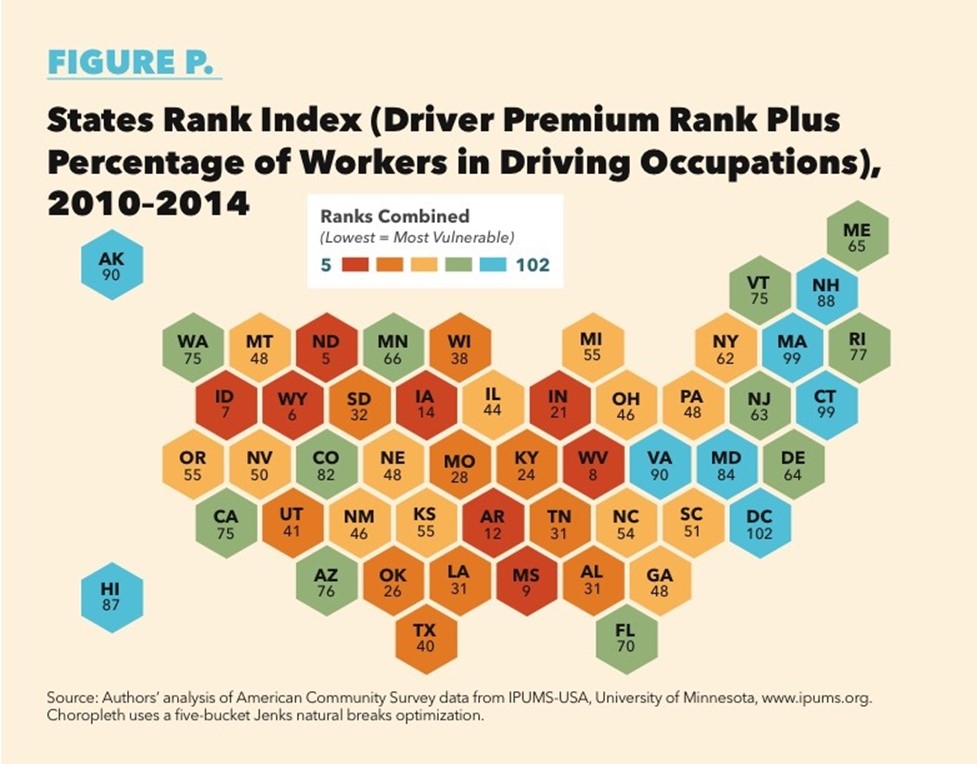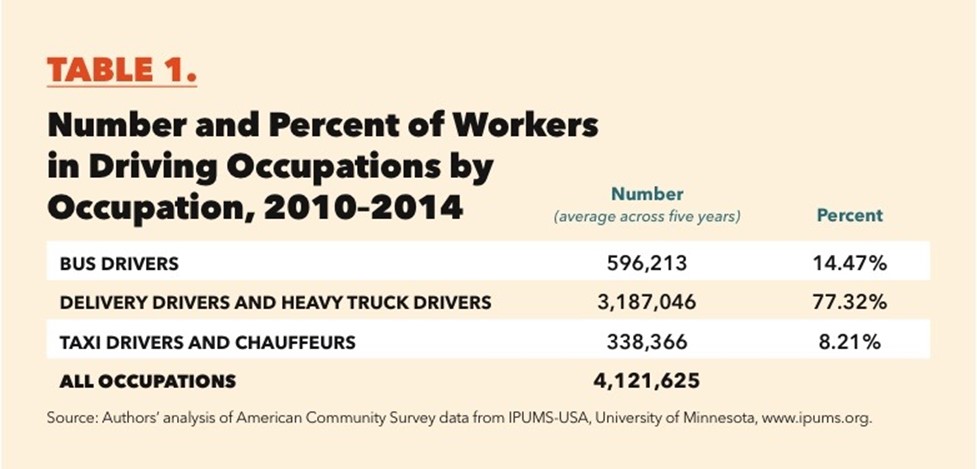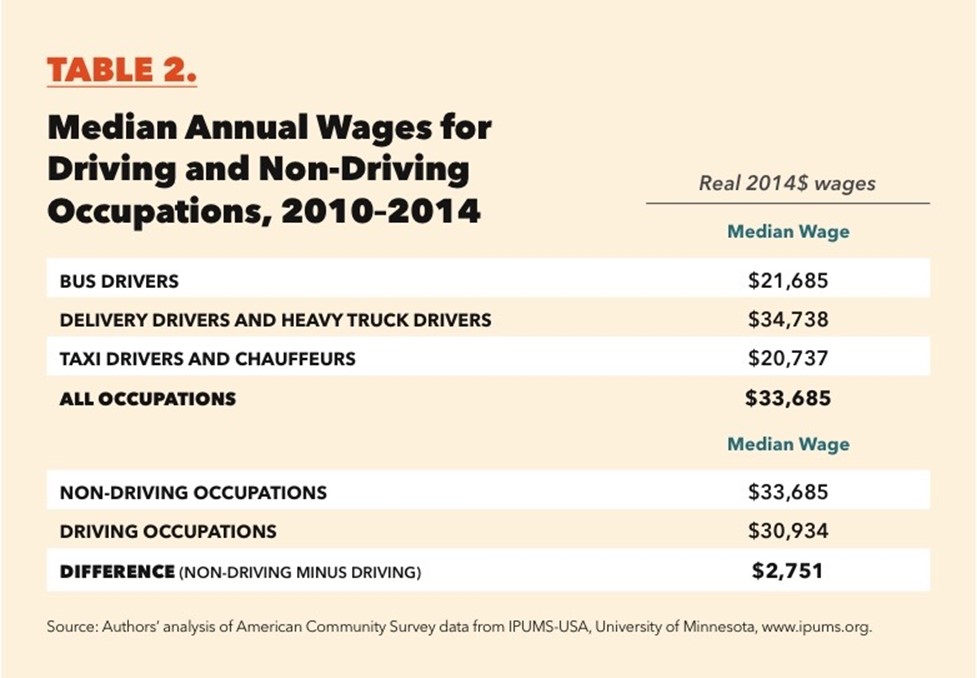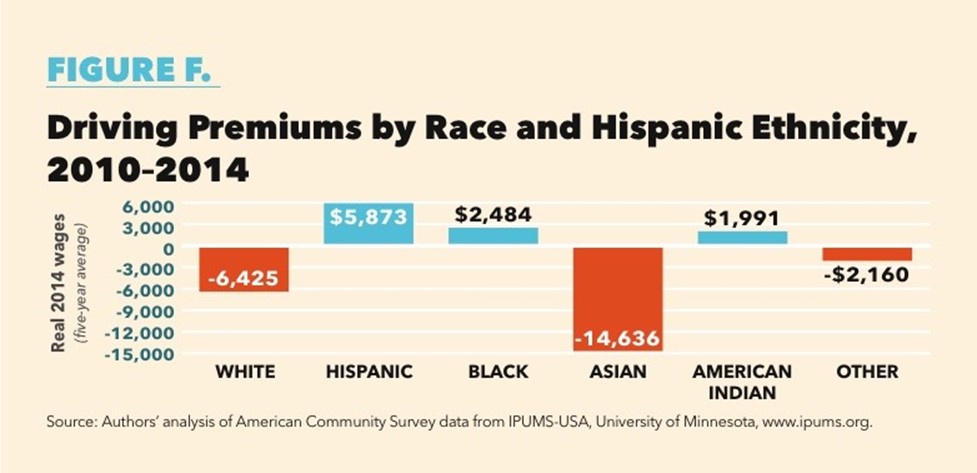
More than 30 companies across the globe say they are working on autonomous-vehicle technology. Their most optimistic predictions are that in as few as three to five years, fully autonomous vehicles will be in regular use on the road. The technology also has the potential to cause significant economic hardship for a number of workers, at least in the short term, the authors say. The report finds that certain population groups and areas of the country would be disproportionately affected by the transition to autonomous vehicles. The authors call for policymakers to take immediate steps to offset the potential for harmful labor disruptions. The U.S. Census Bureau estimates that 2.86 percent of all workers in the United States are employed in driving occupations.

The median worker in a driving occupation earns about $31,000. The number of jobs at risk could be greater than four million. Autonomous vehicles will no doubt create occupations that are hard to imagine today. Will there be roadside computer repair technicians to fix computer malfunctions in autonomous vehicles?

Will autonomous vehicles lead to indirect job creation due to the additional dollars that people and businesses have to spend once they are saving money on vehicle insurance, accident repairs, and car-crash medical bills? These are some of the reasons why it is very hard to predict how autonomous vehicles will transform our economy. More than 30 companies say they are just a few years away from introducing autonomous vehicles to the mass market.
This is likely to cause significant pain in a number of communities, as well as exacerbate the losses of “good jobs,” a category that includes some driving jobs. Strengthening the unemployment insurance system, improving apprenticeship programs, making higher education more affordable, and committing to full employment can not only minimize the harm to displaced workers, but can provide them with opportunities that lead to fulfilling and economically sustaining jobs.

Auto325
STICK SHIFT Autonomous Vehicles, Driving Jobs, and the Future of Work